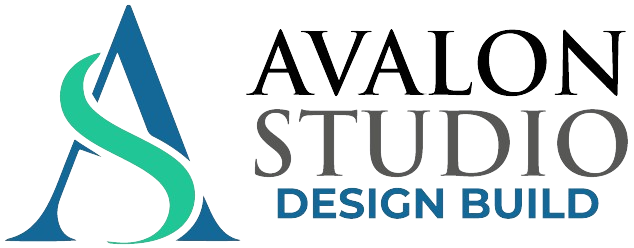Budgeting an ADU in Huntington Beach is about smart planning, not guesswork. While every site, design, and scope is different, you can build a reliable framework for decisions using categories, contingencies, and milestones. This guide breaks down how to structure your budget, what factors commonly drive numbers up or down, and where proactive coordination prevents costly surprises. Early clarity helps you align priorities—layout, finishes, energy features, and outdoor living—so your dollars support the spaces you value most. To ground your planning, start by mapping the entire journey, from feasibility to final inspection, and consider partnering with an experienced ADU budget team that can translate design choices into cost impacts before you submit for permits.
Hard vs. Soft Costs: The Two Pillars
Every ADU budget includes hard costs and soft costs. Hard costs are the physical build—the foundation, framing, roofing, windows, insulation, drywall, finishes, fixtures, and the labor to put it all together. Soft costs are the services, approvals, and protections that enable construction: design, engineering, energy compliance, surveys, geotechnical studies if required, plan check, permits, utilities, and insurance.
- Hard costs: Site prep, foundation, structure, exterior envelope, MEP trades, interior finishes, landscaping, and exterior flatwork.
- Soft costs: Architectural design, structural and energy documentation, civil engineering as needed, plan check and permits, utility fees where applicable, special inspections, and project management.
Allocating funds to both pillars from day one avoids the common trap of overdesigning the building while underestimating approvals, utilities, and required testing.
Site Conditions: The Biggest Early Variable
Huntington Beach lots vary widely. Coastal proximity, older utility laterals, and existing accessory structures can all influence your budget. Flat sites with clear access are generally more straightforward. Sites that require demolition, tree protection, trenching across long distances, or coordination with utility providers will need extra time and money allocated.
- Access and staging: Narrow side yards, limited street parking, and overhead lines can slow work and affect logistics.
- Soils and drainage: Poor soils or high water tables may require alternative foundations or engineered drainage solutions.
- Utilities: Electrical panel capacity, gas meter sizing, and sewer line condition impact scopes; camera inspections and load calculations prevent surprises.
Size, Shape, and Story Count
The simplest rule: more square footage and complexity generally mean larger budgets. A compact, single-story ADU with a straightforward roof often delivers the best value. Adding a second story can unlock better layouts on small lots and preserve yard space, but it introduces stairs, structural elements, and additional safety features that increase scope. Strategic design—stacking kitchens and baths, minimizing long spans, and using standard window sizes—can optimize costs without sacrificing comfort.
Finish Levels and Specification Strategy
Finishes are where budgets breathe. Selecting durable, midrange materials with clean details can keep maintenance low and value high. Use a tiered approach: specify higher-end surfaces where they matter most—kitchens and baths—while keeping secondary spaces simple and timeless.
- Cabinetry and counters: Modular options streamline costs; prioritize functionality, storage, and resilient surfaces.
- Flooring: One continuous material reduces transitions and labor time, and it can make small spaces feel larger.
- Plumbing fixtures and lighting: Coordinate early so rough-in heights and locations match your final selections.
Mechanical, Electrical, and Plumbing Choices
MEP systems influence both first cost and operating costs. Heat pumps provide efficient heating and cooling with simple distribution; heat pump water heaters can be located in small mechanical closets with appropriate ventilation. Consider induction cooktops to simplify venting and indoor air quality. For electrical, plan your circuiting with future EV charging or solar readiness in mind. Efficient fixtures, layered lighting, and balanced ventilation support comfort without complexity.
Permitting and Soft Cost Planning
Soft costs deserve the same rigor as construction. Huntington Beach uses ministerial ADU reviews with objective standards and defined timelines. Include line items for plan check and permits, energy documentation, and any required studies. In the coastal zone, factor in coastal review and potential consultant input for hazards or drainage. Upfront surveys and utility verifications reduce redesign later.
Contingency and Escalation
No budget is complete without contingency. Even well-scoped projects encounter unknowns: concealed conditions in conversions, utility reroutes, or specification changes courtesy of lead times. Build a sensible contingency and keep it separate from upgrades so you can decide, midstream, whether to use it on problem-solving or value-adding enhancements.
Phasing the Budget Across the Project Lifecycle
- Feasibility: Preliminary drawings, zoning checks, utility capacity review, and a site walk to identify constraints.
- Design development: Refine layouts, choose structural systems, and begin material palettes so estimates can lock in assumptions.
- Permit set: Finalize code notes and details; coordinate energy, structural, and site plans for a complete submittal.
- Bidding or guaranteed maximum price setting: Use a clear scope with alternates for items you may upgrade if contingency remains.
- Construction: Track allowances, change orders, and lead times. Protect the schedule through early procurement of long-lead items.
- Closeout: Punch lists, manuals, and final inspections. Plan for a small reserve for post-occupancy tweaks.
Conversion vs. New Detached: Different Budget Profiles
Garage and accessory structure conversions leverage existing walls and foundations, but they require careful detailing to meet structural, energy, and moisture standards. New detached units offer design freedom and better daylighting options but introduce new utilities and site work. Compare both options with whole-project thinking: performance, privacy, outdoor space, and long-term maintenance.
Where Value Engineering Works
- Right-size the footprint: Smaller, smarter layouts reduce materials, labor, and utility loads while maintaining livability.
- Streamline the envelope: Simple rooflines and rectangular footprints minimize transitions and waste.
- Standardize openings: Use common window and door sizes to cut lead time and trim waste.
- Cluster wet areas: Align kitchens, baths, and laundry to shorten plumbing runs and venting.
- Prewire smartly: Add conduit and dedicated circuits where future upgrades are likely, rather than installing seldom-used features now.
Schedule Risk and Lead Times
Lead times affect both budget and schedule. Windows, electrical gear, and specialty finishes can shift delivery dates. Early selection and procurement keep the schedule predictable, which helps avoid extended rentals or temporary living costs. Clarify dependencies in your construction plan so trades arrive when the site is truly ready for them.
Financing Pathways to Consider
Many homeowners explore home equity lines, cash-out refinancing, renovation loans, or construction-to-permanent loans. Each path has its own requirements and timeline. Align the financing close with your permit and mobilization schedule so you are ready to start when approvals land. Think ahead about rent-up timing if you plan to lease the unit long-term.
Mid-Project Course Corrections
Budgets are living documents. When conditions change, use a structured decision process. If an unforeseen utility relocation arises, first protect life-safety and code compliance. Then evaluate whether scope reductions or substitutions elsewhere can preserve the original investment plan. Track changes transparently with before-and-after cost and schedule impacts so there are no surprises.
Case-Smart Tips for Huntington Beach
- Coastal durability: Specify corrosion-resistant fasteners and hardware; choose exterior finishes that tolerate salt air.
- Drainage strategy: Plan downspouts, splash blocks, or drains so added roof area does not affect neighbors or the right-of-way.
- Alley opportunities: If you have alley access, consider orienting entries and parking there to simplify street frontage.
Frequently Asked Questions
Q: What determines most of an ADU’s budget? A: Size, site complexity, specification level, and utility upgrades are the major drivers. Early coordination with design and trades clarifies assumptions and prevents rework.
Q: Are conversions always cheaper than new builds? A: Not always. Conversions can uncover structural or moisture issues. New detached units can be efficient if layouts are simple and access is good.
Q: How do I plan for soft costs? A: List each item—design, engineering, energy documentation, surveys, permits, and special inspections—and assign realistic allowances based on local experience. In the coastal zone, add time and budget for coastal review.
Q: Can I phase work to manage cash flow? A: Yes. You can separate site prep, utilities, and vertical construction, but coordination is key so that staged work still passes inspections smoothly.
Q: How do I reduce change orders? A: Complete selections before permit submittal, verify utilities, and walk the site with key trades to confirm access and sequencing.
Build Confidence in Your Numbers
A thoughtful budget is not a spreadsheet exercise—it is the map for your project. Define scope, confirm code pathways, and pick durable specifications that align with your goals. With a clear plan, you can move through approvals and construction with fewer surprises and more control over outcomes. If you want support translating drawings into a predictable build plan, consult a team experienced in Huntington Beach zoning, energy code, and constructability. Mid-project clarity matters too; schedule check-ins at milestones so you can adjust proactively. For holistic guidance on planning, design, approvals, and construction, connect with an experienced accessory dwelling unit partner who can keep your budget and schedule on track.
Ready to Move Forward in Huntington Beach?
When you are ready to turn your plan into a permitted, beautifully built living space, assemble a team that can estimate accurately, procure on time, and execute cleanly. Align financing with milestones, lock selections early, and keep contingencies intact for the unknowns that matter. If you want a single point of accountability from first sketch to final inspection, consider a trusted ADU experts partner that brings design, permitting, and construction under one roof.

